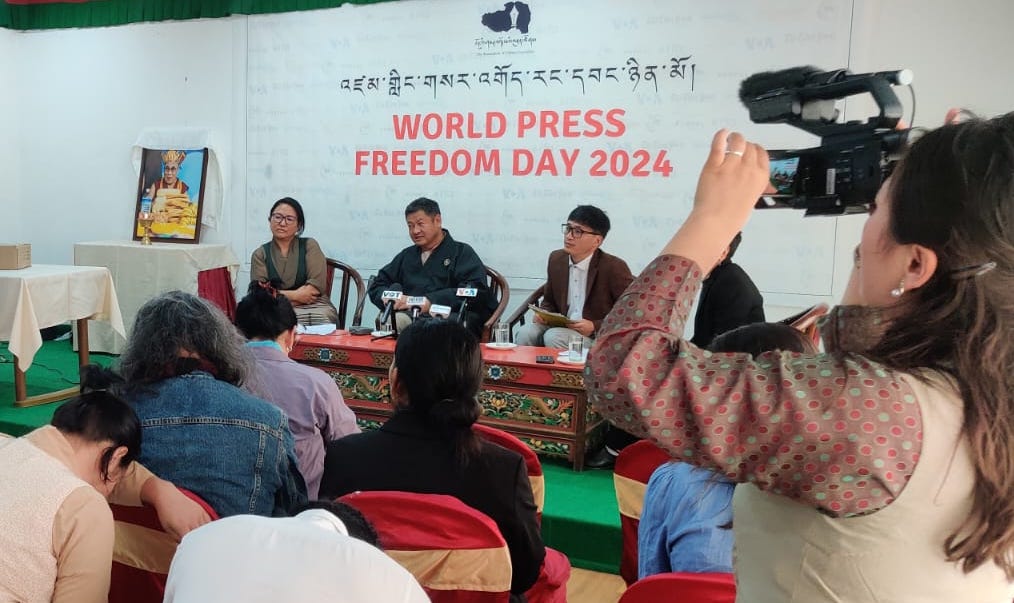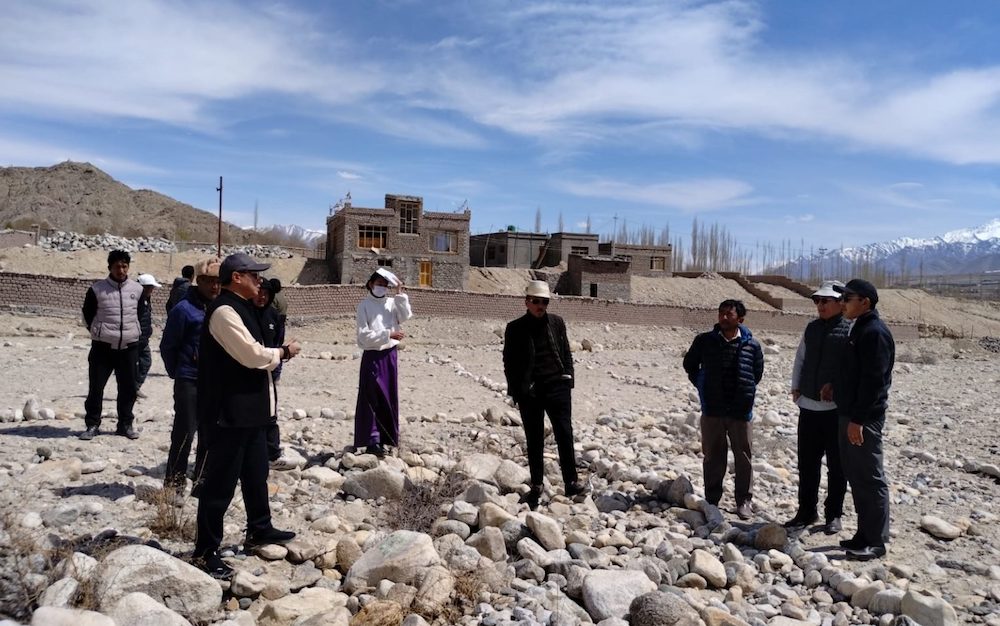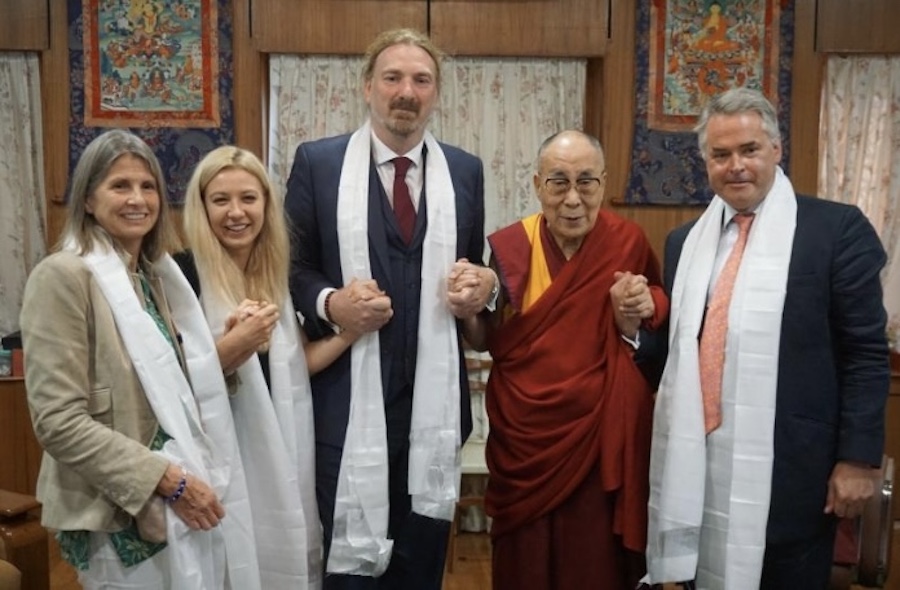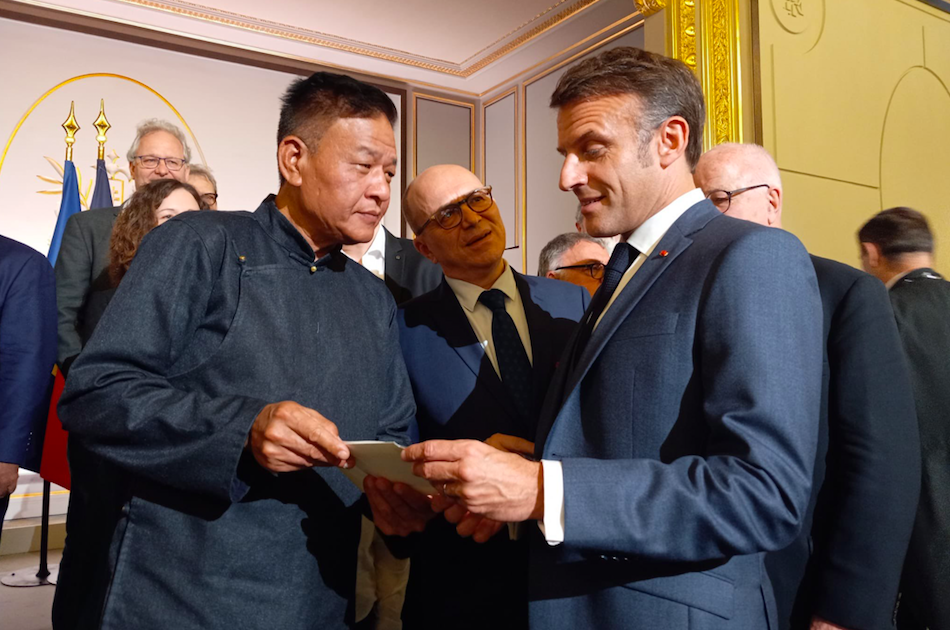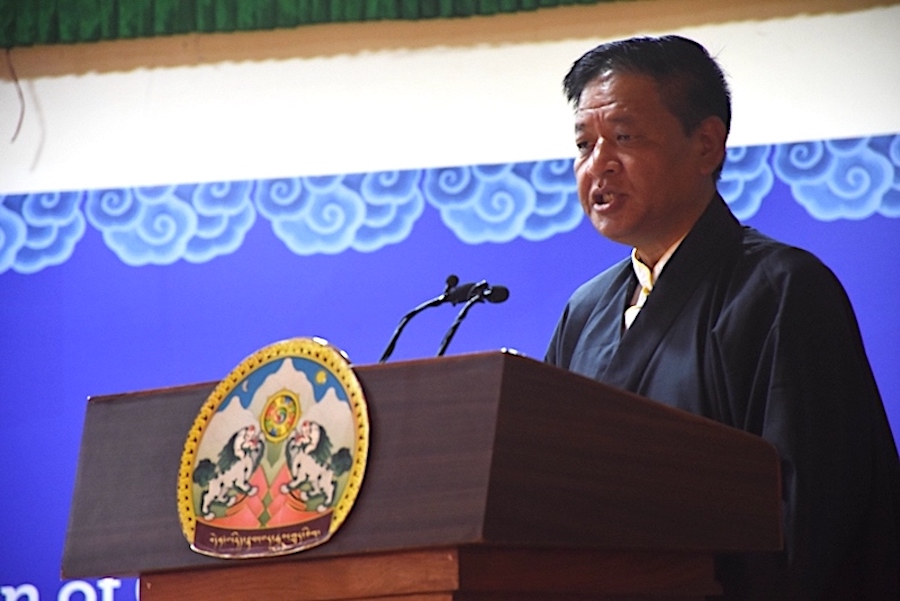By Lisa Peterson de la Cueva
 April 30 – Pema Dechen sat on a folding chair outside the Tibetan American Foundation of Minnesota waiting patiently for the razor to reach for scalp. She looked straight ahead, seeming not to acknowledge the crowd of shivering onlookers. After twenty minutes of nicking and shaving, Dechen stood up and walked away, her feet weaving through the remnants of her locks. Another member of the crowd stood up to take her place and the head shaving began anew.
April 30 – Pema Dechen sat on a folding chair outside the Tibetan American Foundation of Minnesota waiting patiently for the razor to reach for scalp. She looked straight ahead, seeming not to acknowledge the crowd of shivering onlookers. After twenty minutes of nicking and shaving, Dechen stood up and walked away, her feet weaving through the remnants of her locks. Another member of the crowd stood up to take her place and the head shaving began anew.
Dechen was one of hundreds of Tibetans, and handful of supporters, who gathered for a prayer vigil and head shaving ceremony in St. Paul, on Monday April 28th. Fifty people also shaved their heads in mourning and solidarity with the monks, nuns, and victims of violence in Tibet that began last month.
The communal head shaving is one of many Tibetan solidarity events that took place across the globe. The event occurred 49 days after Buddhist monks and nuns led protests in the capital of Tibet. The protests, which marked the 49th year of Chinese occupation in Tibet, have left 162 people dead as of April 25th, according to the Tibetan government-in-exile.
The reoccurrence of the number 49 is no coincidence. According to Buddhism, after a person dies the soul remains on the earth and among its loved ones for 49 days. On the 49th day the soul reincarnates, wherever that may be on its karmic path. In some Buddhist traditions a man shaves his head in mourning on this day.
Although most of the participants in the head shaving in St. Paul were men, Pema Dechen and her sister also shaved their heads. Dechen, a Clinical Support Associate at Children’s Hospital, thinks her colleagues and others will be curious about her new haircut. “They will put the question, ‘what happened, why did you do this?’ and I will have to explain,” she said.
First generation Tibetans, like Dechen, were not the only ones mourning. Second and third generation Tibetans, like Tenzin Waleag, showed up as well. Waleag is a junior at the University of Minnesota and lived in India for many years before coming to Minnesota. He has never been to Tibet and says this can raise eyebrows. “A lot of Chinese students ask you if you’ve ever been to Tibet, and say, if you’ve never been, how do you know?” Waleag said. He stays connected through his family, by attending Tibetan sponsored events, and participating in Students for a Free Tibet.
Like Dechen, Waleag also sees the head shaving as a way to raise awareness. “I’ve never been shaved and if I do it maybe people will ask you why,” He said. “It’s a better way to explain to people what happened. You’ve got to get people’s attention. That’s the whole point.”
The showing of youth support in the Tibetan community impresses Thinly Woser, president of the Tibetan American Foundation. “We don’t need to tell them anything or persuade them, the young people are coming out by themselves.” He added, “This is the third generation, but still they have that dynamism.”
Jigme Ugen, Vice President of SEIU Healthcare Minnesota, is active in the Tibetan community and also recognizes the strength of youth participation. “This is a younger generation that is coming up and they are frustrated and angry, even though they haven’t been to Tibet they show support. It’s amazing.” He added that the frustration stems from “China’s band-aid approach to a solution,” and the Chinese government’s “attacks and insults” on the Dalai Lama. The Chinese government has long banned images of the DaLai Lama in Tibet, and has accused the Dalai Lama of inciting violence in the March protests.
That being said, Ugen also sees some problems with the government-in-exile and their approach to regaining independence. “It has been years and their approach is not working. I know some of the government in-exile, and it can be frustrating,” Ugen said.
Many organizers said there has been a heightened awareness on Tibet in the media and the public because of the March protests, but the attention has had an unwelcome tilt. Ugen explained, “The media asks us, is this linked to the Olympic games in China? That’s all they want to know.”
The Olypmic games may be shifting global attention to the issue, but the head shaving and prayer vigil in St. Paul centered on the lives in the recent protests. Although Pema Dechen is a middle-aged woman who has never had short hair, let alone a bald head, she took it in stride and kept the focus on Tibetan lives. “I am sacrificing only my hair,” she said, “they are sacrificing their lives.”
Lisa Peterson-de la Cueva (peterson.delacueva@gmail.com) is an educator and has taught in various contexts, including junior high social studies and adult basic education. She is transitioning from a career in teaching to freelance writing and is interning at TC Daily Planet.
Rinpo Lama’s prayer in motion
Rinpo Lama began a prayer and prostration pilgrimage at the Minnesota State Capitol on April 25, the 19th birthday of the Panchen Lama. Making his way down University Avenue through days of rain and snow, he planned to arrive at Minneapolis City Hall in sunshine Thursday afternoon.
A press release explained that, “Through the prostration, Rinpo hopes to raise awareness about Tibet and hope for international pressure to China to release Panchen Lama who was arrested and put under house arrest at the age of six in 1995 along with his family and teachers. The young Panchen Lama turned nineteenth on April 25 and his where about is still unknown as documented by Amnesty International.”
In 2006, Rinpo Lama, who lives in Minneapolis, rode a bike to New York, arriving on April 25 at the United Nations.





